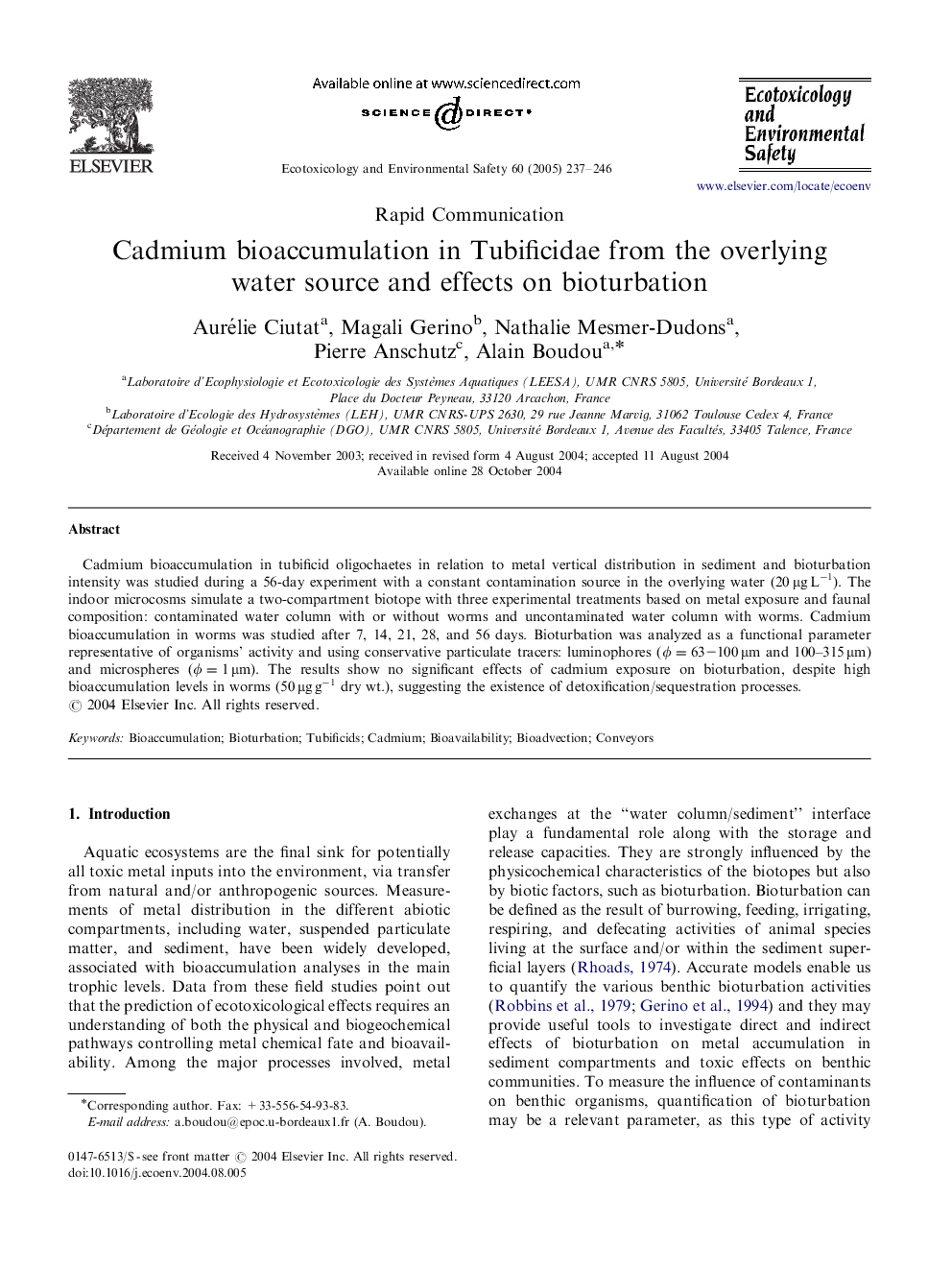| Article ID | Journal | Published Year | Pages | File Type |
|---|---|---|---|---|
| 9454751 | Ecotoxicology and Environmental Safety | 2005 | 10 Pages |
Abstract
Cadmium bioaccumulation in tubificid oligochaetes in relation to metal vertical distribution in sediment and bioturbation intensity was studied during a 56-day experiment with a constant contamination source in the overlying water (20 μg Lâ1). The indoor microcosms simulate a two-compartment biotope with three experimental treatments based on metal exposure and faunal composition: contaminated water column with or without worms and uncontaminated water column with worms. Cadmium bioaccumulation in worms was studied after 7, 14, 21, 28, and 56 days. Bioturbation was analyzed as a functional parameter representative of organisms' activity and using conservative particulate tracers: luminophores (Ï=63-100μm and 100-315 μm) and microspheres (Ï=1μm). The results show no significant effects of cadmium exposure on bioturbation, despite high bioaccumulation levels in worms (50 μg gâ1 dry wt.), suggesting the existence of detoxification/sequestration processes.
Related Topics
Life Sciences
Environmental Science
Environmental Chemistry
Authors
Aurélie Ciutat, Magali Gerino, Nathalie Mesmer-Dudons, Pierre Anschutz, Alain Boudou,
